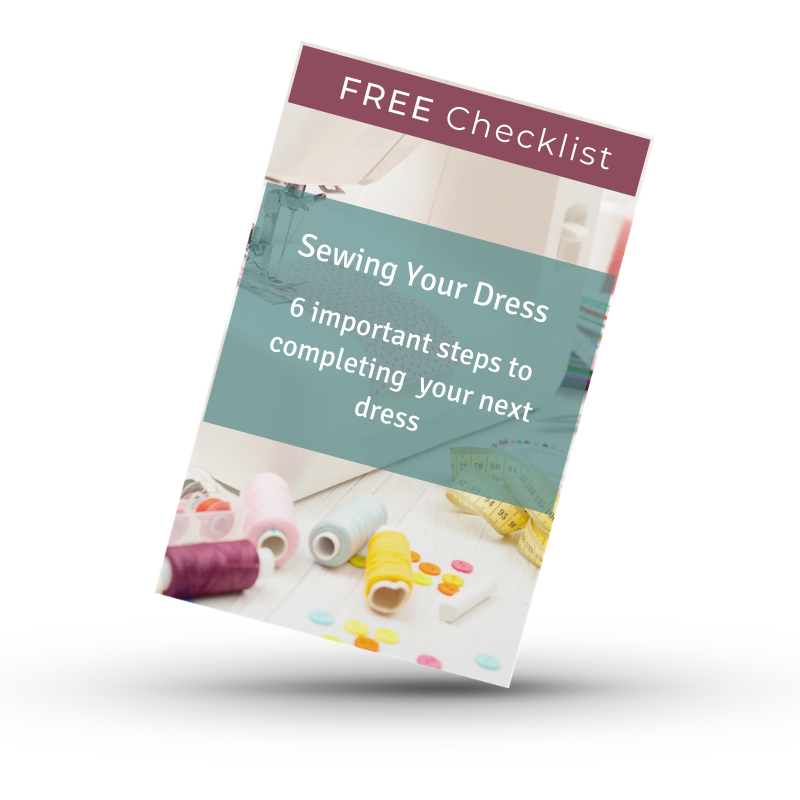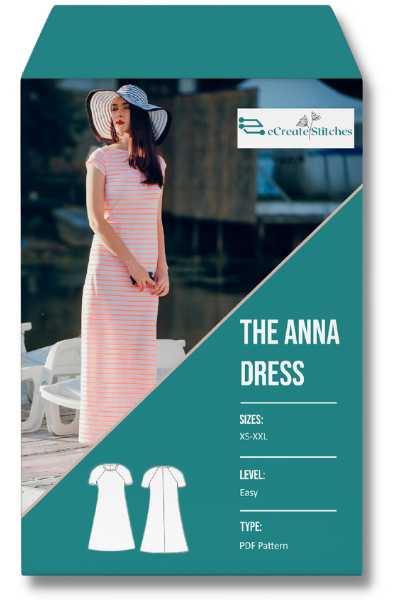Pull out that dress that wasn’t fitting, that you chucked in the corner and vowed would never touch again. Let’s go over some easy fitting tips and see if that dress can’t be fixed and adjusted to fit how you would like.
Because hey, I know what it’s like to sew a dress that doesn’t fit! If I had only known some easy fitting tips and a little boost of confidence I would have been a lot happier with the results!
Therefore, I want to share with you some tips I have discovered along the way. Hopefully it will help you so that you can enjoy many good sewing experiences and dresses that fit!
Easy fitting tips: Size grading
The first easy fitting tip I want to talk about is size grading.
Size grading is what I like to start with first because it gives a base pattern to start with. If you are working with a dress that is partially sewn then still start with this process to see where things may have gone wrong.
After taking your measurements, compare to the measurements in the pattern size chart. Most likely your measurements will not follow one particular size and that is where size grading comes in.

Make a note of which sizes would fit your bust, waist, and hip measurements. In the picture above I have circled the sizes that fit my measurements.
If your measurements fall between sizes choose the size larger. It’s easier to take seams in then to let them out. 😉
In my case my bust measurement was 38.5 inches so I went with the size medium for the bust. I have found that the half inch was not enough difference to go up a size.
Easy fitting tips : pattern adjustments
To make adjustments to the pattern begin with the size required to fit your bust measurement. Then connect the side seam line to the size needed to fit your waist measurement.

Like this.
Adjust front and back bodice pieces. I needed to go up a size from medium to large. Going down a size would work the same way. Make any other adjustments you need such as the neckline or bodice length.
Now adjust the skirt patterns using the same method.

Begin at the size that fits your waist measurement and over to the size that fits your hip measurement. Be sure to adjust both front and back skirt pieces. Make any other adjustments you would like such as skirt length or bottom width.
Now trace pattern pieces onto separate paper so that you have the original pattern to work with if more adjustments are needed later.
Cut out pattern pieces and then dress pieces and sew the muslin together. Read this blog for more detail on sewing a muslin.
Trying on the muslin
Try the dress on inside out. That way you can make any adjustment marks on the wrong side of the fabric.
How does the dress fit? Is it baggy in some places? Too tight?
Here are a few important areas to check for fit:
- shoulder width
- upper bust
- full bust
- waist length
- waist circumference
- hip circumference
- sleeve width
- skirt and sleeve length
Truly, sewing a muslin or test garment cuts out so much frustration! It lets you relax and take your time with figuring out adjustments because it is not the final garment!
So just take your time and pin here and take out there until you are happy with the fit. 😊
Marking adjustments
Now it’s time to mark the adjustments. You may need a sewing buddy at this point to help with making adjustment marks or helping to pin in the areas that need taking in.
My sewing buddy was my hubby so just get someone that’s willing to help. 😉😉
If you find that there are places that are baggy you can sew seams in using a bigger seam allowance or consider adding darts. If there are darts you may just need to sew them in deeper.
Make a note of which areas feel too tight, and which seams may need letting out. If there are creases in any certain area, that is a sign that an adjustment is needed.
Use a frixion pen or water soluble pen to make any marks. Use pins to make areas tighter where needed.
And if the muslin is too loose or too tight all around you may want to start again using a different size.
My dress adjustments
And now I want to show you a few adjustments I made on the Carlee Dress pattern.

This is the Carlee Dress pattern that I am fitting for myself. It fits pretty good but the midriff is a bit too long and doesn’t look right sitting right on my “mama belly”.

Plus you can see in this picture that the back midriff pooches funny so it needs some help.

Here the midriff is pinned up so that the length of the bodice is shortened. Just doing that fixed several areas. (don’t you love the skirt?😄 as you can tell, my fabric scraps weren’t long enough for a full length skirt)
The pooch in the back midriff was actually fixed just by shortening the bodice! Also by bringing the waist seam a bit higher brought the skirt up, which put the wider part of the skirt at the hips. Having more room at the hips is always a good thing! 😊
There you go! I hope these easy fitting tips have helped you a little to get on the road to the fit you want!
And now I would love to hear from you! What is your biggest challenge in getting your dresses to fit? Let me know in the comments below!
Happy sewing!










Really glad for your instructions! I have been having trouble getting my daughters dresses to fit right. Thanks so much!
I am happy to help! Wishing you lots of fitting success! 😊
Here are some of our biggest fitting challenges…
1) full bust: with a 5" difference between upper bust and full bust measurement, an FBA (full bust adjustment) is almost always necessary along with adjusting for a lower than average bust point.
2) round front: One person I sew for has a very round front. We have found that using one size for the front and a smaller size for the back, then adjusting the shoulder seams and sleeves, gives us a better start to a well-fitting garment.
3) Knits with lots of vertical stretch and/or fabrics that drape well are also fit challenges.
Wow you have some major adjustments to work with! Cheers to you! I agree that sewing with knits can be very challenging since there are so many different kinds with different percent stretch and different types of fabric content.